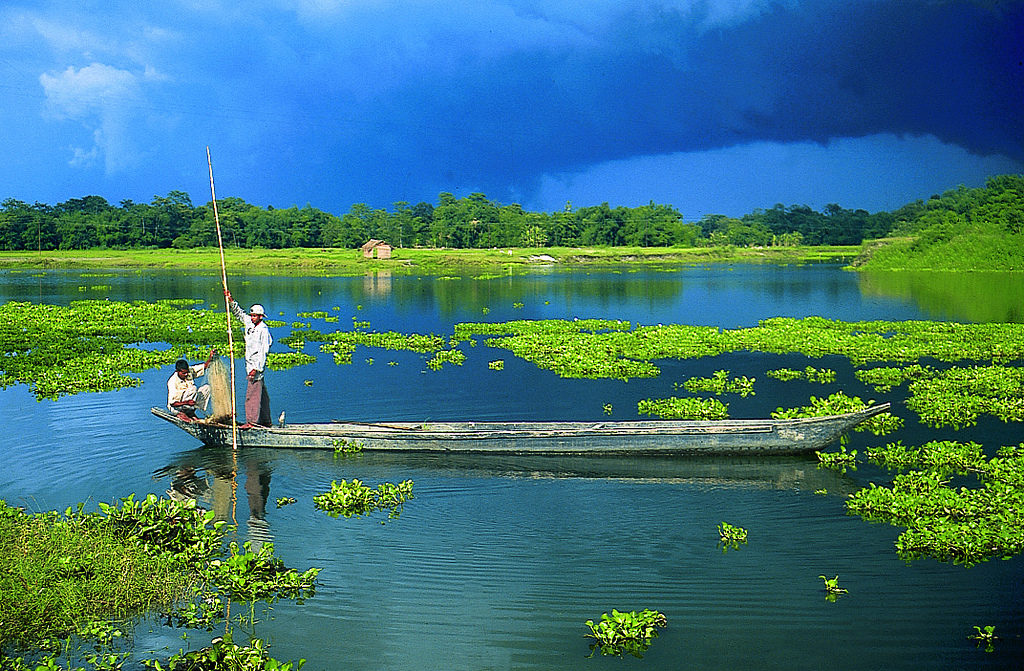In the less explored terrains of north-east India

The north eastern region has various elements that make it a magical homeland (Picture courtesy: Abhra Bhattacharya)
For travellers who are seeking solace and want a peaceful retreat, the north eastern region has several places that can rejuvenate one’s mind, body and soul with the lahe lahe (take it easy) approach.
Offbeat travellers seeking nature and adventure in India, look no beyond than the country’s best kept secret-the north-eastern region.
Considered one of the greatest unknown and unexplored regions in Asia, it boasts of some of the most fascinating places in the world.
With rich culture, exuberant people, peculiar food, and raw landscape, the north eastern region has various elements coming to play to it a magical homeland.
Sensing the need to make people aware about what this region has to offer, Abhra Bhattacharya, a tourism entrepreneur working for Native Route Pvt Ltd is offering Lahe-Lahe packages for stressed, overworked executives and business managers seeking to get away from the pressures of work.
The company is developing packages around the Lahe-Lahe approach. Assamese for take it easy, it is north east’s guiding catchphrase. This approach to life is often blamed for lack of progress in Assam and elsewhere in the north-east. However, now it is being used to make people go a bit slow in their fast paced life.
“I’ve been travelling across north-east since 2000 for documentary research. While travelling this region I was fascinated by its laid back attitude. There’s no rush. I found it so different from our city life that I thought this should be the ultimate holiday, one where you do not have to rush. My idea is to encourage people to come and experience a few days Lahe Lahe or slowly-slowly. Once you indulge in this slow pace with no commitment, you will soon be out of stress,” says Bhattacharya while talking to Media India Group.
Community driven tourism resort
Bhattacharya is now setting up a community-driven tourism resort in far-off Anini in Arunachal Pradesh after being fascinated by the lives and culture of the tribal in the region.
“When I first saw Anini in 2003, I knew that I have to do something here, as to me it was the most beautiful part of Arunachal Pradesh. But sadly there was no place to stay. I was also fascinated by the Idu Mishmi tribes. Firstly, the women do not eat any hunted meat. Secondly, every hunter cannot eat in his house or sleep with his wife for seven days after he has killed any animal, and thirdly, they cannot hunt a tiger. If they kill a tiger, they can’t eat at home and have to stay in abstinence for a month. I have never seen any tribe with such rules of hunting,” says Bhattacharya.
It was years later, when Bhattacharya who has extensive experience in the region as a nature and wildlife researcher for leading TV channels like BBC, National Geographic and Animal Planet, took the initiative and decided to setup the resort at Anini, a model project that is built by the local community with available resources. Abhra’s company provides guidelines for design and will run the resort when it is ready.
“Since 2016 I started training them in hospitality, making them understand how to handle tourist groups. I am training the hunters as naturalists so that they can make money by showing the wildlife to the travellers rather than killing the animal. I am trying to make them understand that if they kill the animals they can eat it for a few days but if they don’t kill it then they can make money by showing the same animals time and time again to the tourists. My first group of hunters turned naturalists are going to take a UK couple for trekking in July to show the Mishmi Takins,” he says.
“My target is to run the resort entirely by the locals so that they get the full benefit of tourism there,” adds Bhattacharya.
If you are one of those who cannot decide where to start, here is a list of few places-
Cherrapunjee, Meghalaya
Located in Meghalaya, Cherrapunjee is a paradise for monsoon lovers. Considered to be the second wettest place on Earth, this majestically beautiful place brings you closer to nature. The wettest place on Earth is Mawsynram and is Cherrapunjee’s neighbour. From adventurous trails, to splendid caves, and living roots’ bridges to picturesque waterfalls, this place has everything a nature-hunter could be looking for.
Majuli, Assam
The biggest river island in the world located on the Brahmaputra River, Majuli Island is an environment friendly place, covered in greenery on all sides. Many travellers visit the place as it has 22 Vaishnava Satras (religious institutions), which were established during the 15th century. Bird watching is another attraction here. One can also hire a boat to see around. Majuli is known to grow about 100 different types of rice among which Komal Saul is a unique one.
Roing, Arunachal Pradesh
If you are seeking solitude and enriching experience amidst nature, then Roing is the perfect place for you. Considered to be one of the jewels of Arunanchal Pradesh, this place is situated in lower Dibang valley and is criss-crossed with numerous streams, rivers and rivulets. With adventurous locations, ancient history and picturesque landscape, this place offers the best of nature. Roing is considered to be an ancient place where human habitation began in Neolithic period.
Khonoma, Nagaland
Khonoma, hailed as India’s first green village, in Nagaland is famous for its forests and a unique form of agriculture, including some of the oldest terraced cultivation in the region. The terrain of the village is hilly covered with lush forestland, rich in various species of flora and fauna. The never ending terraces of paddy fields carved out of the hilly slopes are a sight to behold. Khonoma is also home to the state bird Blyth’s tragopan, a pheasant now nationally endangered.














